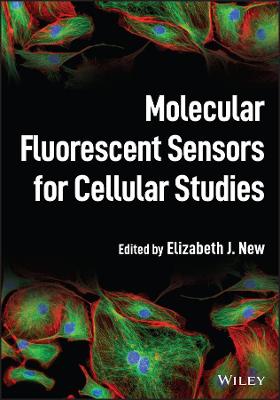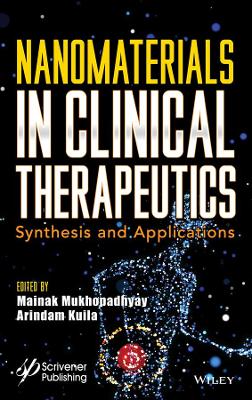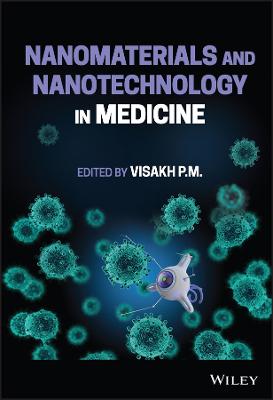Molecular Fluorescent Sensors for Cellular Studies
 -15%
portes grátis
-15%
portes grátis
Molecular Fluorescent Sensors for Cellular Studies
New, Elizabeth J.
John Wiley & Sons Inc
09/2022
304
Mole
Inglês
9781119749813
15 a 20 dias
618
Descrição não disponível.
List of Contributors ix
1 An Introduction to Small Molecule Fluorescent Sensors 1
Liam D. Adair, Kylie Yang, and Elizabeth J. New
1.1 What is Fluorescence? 1
1.2 Why Is Fluorescence Useful? 3
1.3 What Is a Fluorescent Sensor? 4
1.4 General Types of Fluorescent Sensors 5
1.5 Important Parameters 7
1.5.1 Excitation Maxima 7
1.5.2 Emission Maxima 8
1.5.3 Stokes Shift 8
1.5.4 Quantum Yield 9
1.5.5 Molar Extinction Coefficient 9
1.5.6 Brightness 10
1.5.7 Lifetime 10
1.5.8 Photobleaching 11
1.5.9 Anisotropy 12
1.5.10 Quenching 12
1.6 Fluorescence Mechanisms Used in Fluorescent Sensors 13
1.6.1 Photoinduced Electron Transfer 13
1.6.2 Internal Charge Transfer 14
1.6.3 Foerster Resonance Energy Transfer 15
1.6.4 Through Bond Energy Transfer 17
1.6.5 Excited- State Intramolecular Proton Transfer 18
1.6.6 Aggregation- Induced Emission 19
1.6.7 Excimer Formation 21
1.7 Commonly Used Fluorophores 21
1.7.1 Fluorescein 22
1.7.2 Rhodamine 24
1.7.3 Coumarin 26
1.7.4 Naphthalimide 26
1.7.5 BODIPY (4,4- Difluoro4- bora- 3a,4a- diaza- s- indacene) 27
1.7.6 Cyanine 28
1.8 Summary 30
References 30
2 The Applications of Responsive Fluorescent Sensors to Biological Systems 37
Jia Hao Yeo and Elizabeth J. New
2.1 Criteria for Biologically Relevant Fluorescent Sensors 37
2.2 Microscopy for Visualising Fluorescent Sensors 39
2.2.1 Important Considerations in Microscopy 39
2.2.1.1 Resolution in Microscopy 39
2.2.1.2 Understanding the Competition Between True Signal and Noise 41
2.2.1.3 Phototoxicity in Cells 42
2.2.2 Common Microscopy Techniques 43
2.2.2.1 Fluorescence Microscopy 43
2.2.2.2 Confocal Microscopy 44
2.2.2.3 Multiphoton Microscopy 45
2.2.2.4 Fluorescence Lifetime Imaging Microscopy 45
2.2.2.5 Other Advanced Microscopy Techniques 47
2.3 Other Instrumental Techniques for Studying Cells Treated with Fluorescent Sensors 49
2.3.1 Flow Cytometry 49
2.3.1.1 Principles of Flow Cytometry 49
2.3.1.2 Understanding Flow Cytometry Data with Small- molecule Sensors 50
2.3.1.3 Recent Advances in Flow Cytometry 51
2.3.2 Fluorescence Plate- readers 51
2.3.2.1 Standard Plate- reader Assays 51
2.3.2.2 High- content Imaging (HCI) Plate- readers 52
2.4 Biological Samples to Which Fluorescent Sensors Can Be Applied 52
2.4.1 Cultured Mammalian Cells 52
2.4.1.1 Adherent Mammalian Cells 53
2.4.1.2 Non- adherent Cells 53
2.4.1.3 Multi- cellular Models 54
2.4.2 Bacteria 54
2.4.3 Plants 54
2.4.4 Multi- cellular Organisms 55
2.4.5 Towards In Vivo Imaging 55
2.5 Common Challenges and Misconceptions in the Applications of Fluorescent Sensors 56
2.5.1 Important Considerations in Applying Sensors 56
2.5.2 Common Misconceptions About the Use of Sensors - The Bridge Between Multiple Disciplines 57
2.6 Conclusions 60
References 60
3 Methods to Control the Subcellular Localisation of Fluorescent Sensors 63
Jiarun Lin, Kylie Yang, and Elizabeth J. New
3.1 Introduction 63
3.2 Targeting the Nucleus 64
3.3 Targeting Mitochondria 66
3.4 Targeting Lysosomes 67
3.5 Targeting Endosomes 69
3.6 Targeting Autophagic Compartments 70
3.7 Targeting Peroxisomes 70
3.8 Targeting the Endoplasmic Reticulum 71
3.9 Targeting the Golgi Apparatus 72
3.10 Targeting Lipid Droplets 73
3.11 Targeting the Plasma Membrane 74
3.12 Targeting the Cytoskeleton 75
3.13 Targeting the Cytosol 76
3.14 Trapping and Accumulation of Sensors 76
References 77
4 Recognition- based Sensors for Cellular Imaging 83
Amy A. Bowyer, Jianping Zhu, and Elizabeth J. New
4.1 Considerations for Recognition- based Sensing 83
4.1.1 Receptor-Analyte Recognition and Binding Affinity 84
4.1.1.1 Defining Binding Affinity 85
4.1.1.2 Measuring Binding Stoichiometries and Binding Affinity 85
4.1.2 Key Considerations to Enhance Selective Receptor to Analyte Recognition 87
4.1.2.1 Size 88
4.1.2.2 The Chelate Effect 88
4.1.2.3 Hard-Soft Acid-Base Theory 89
4.1.2.4 Crystal and Ligand Field Theory 89
4.2 Recognition- based Cation Sensing 91
4.2.1 Group I and II Metal Sensing 92
4.2.1.1 The Biological Significance of Group I and II Metals 92
4.2.1.2 Receptor Group Design for Group I and II Metals 93
4.2.2 Essential Transition Metal Sensing 98
4.2.2.1 The Biological Significance of Essential Transition Metals 98
4.2.2.2 Receptor Group Design for Essential Transition Metals 99
4.2.3 Toxic Metal Sensing 107
4.2.3.1 The Biological Significance of Toxic Metals 107
4.2.3.2 Receptor Group Design for Toxic Metals 108
4.3 Recognition- based Anion Sensing 110
4.3.1 Anion Sensing Approaches 110
4.3.1.1 Hydrogen Bonding 110
4.3.1.2 Displacement Approach 111
4.3.1.3 Metal Coordination 112
4.3.2 Halogen Ions Sensing 113
4.3.2.1 The Biological Role of Halogen Ions 113
4.3.2.2 Recognition- based Fluorescent Sensors for Halogen Ions 113
4.3.3 Inorganic Phosphates and Pyrophosphates 114
4.3.3.1 The Biological Role of Inorganic Phosphates and Pyrophosphates 114
4.3.3.2 Sensors for Inorganic Phosphates 115
4.3.3.3 Sensors for Inorganic Pyrophosphate 116
4.3.4 Bicarbonate, Hydrogen Sulfate, and Nitrate 120
4.3.4.1 The Biological Roles of Bicarbonate, Hydrogen Sulfate, and Nitrate 120
4.3.4.2 Sensors for Bicarbonate, Hydrogen Sulfate, and Nitrate 121
4.4 Conclusions 123
References 123
5 Activity- based Fluorescent Sensors and Their Applications in Biological Studies 129
Liam D. Adair, Nian Kee Tan, and Elizabeth J. New
5.1 Introduction 129
5.1.1 Design Principles 130
5.2 Oxidation Reactions for Sensing Oxidative Species 131
5.2.1 Fluorescent Sensors for Hydrogen Peroxide 131
5.2.2 Fluorescent Sensors for Peroxynitrite 134
5.2.3 Fluorescent Sensors for Hypochlorous Acid 136
5.2.4 Fluorescent Sensors for Nitric Oxide 137
5.2.5 Fluorescent Sensors for Singlet Oxygen 138
5.3 Reduction Reactions for Sensing Reductive Species 140
5.3.1 Fluorescent Sensors for Hydrogen Sulfides 140
5.3.2 Fluorescent Sensors for Glutathione, Cysteine, and Homocysteine 141
5.3.3 Fluorescent Sensors for Selenocysteine 144
5.4 Reactions for Sensing Carbonyl Species 145
5.4.1 Fluorescent Sensors for Formaldehyde 145
5.4.2 Fluorescent Sensors for Methylglyoxal 146
5.5 Metal- mediated Reactions 148
5.6 Metal- sensing Reactions 149
5.7 Enzymatic Reactions 155
5.8 Reversible Reactions 159
5.8.1 Nucleophilic Conjugate Additions 159
5.8.2 Nucleophilic Addition 162
5.8.3 Imine Formation 162
5.8.4 Oxidation-Reduction Reactions 163
5.9 Analyte Regeneration 164
5.10 Summary 166
References 166
6 Fluorescent Sensors of the Cellular Environment 173
Nian Kee Tan, Jianping Zhu, and Elizabeth J. New
6.1 Fluorescent Sensors for Polarity and Viscosity 173
6.1.1 The Biological Significance of Polarity and Viscosity 173
6.1.2 Twisted Intramolecular Charge Transfer as a Mechanism for Polarity and Viscosity Sensing 174
6.1.2.1 TICT- based Viscosity Sensors 176
6.1.2.2 TICT- based Polarity Sensors 178
6.1.3 Polarity Sensors Based on Other Mechanisms 178
6.1.3.1 Polarity Sensors Based on Intramolecular Charge Transfer Mechanism 178
6.1.3.2 Polarity Sensors Based on Excited- state Intramolecular Proton Transfer Mechanism 180
6.1.3.3 Polarity Sensors Based on Photoinduced Electron Transfer Mechanism 180
6.2 Fluorescent Sensors for pH 181
6.2.1 The Regulation of pH in Health and Disease 181
6.2.2 Considerations and Design Strategies for the Preparation of pH Sensors 182
6.2.2.1 Methods to Control pK a 183
6.2.3 Examples of pH Sensors 185
6.2.3.1 Photoinduced Electron Transfer as a Mechanism for Sensing 185
6.2.3.2 The Ring Opening of Rhodamines as a Mechanism for pH Sensing 187
6.2.3.3 Intramolecular Charge Transfer as a Mechanism for Ratiometric pH Sensing 188
6.2.3.4 pH Sensors Based on Addition Reactions 189
6.3 Fluorescent Redox Sensors for Biological Studies 190
6.3.1 The Regulation of Redox State in Health and Disease 190
6.3.2 Design Strategies of Fluorescent Redox Sensors and Key Examples 191
6.3.2.1 Redox Sensors Based on the Nitroxyl Radical/Hydroxylamine Redox Couple 191
6.3.2.2 Redox Sensors Based on the Quinone/Hydroquinone Redox Couple 192
6.3.2.3 Redox Sensors Based on Chalcogens 193
6.3.2.4 Redox Sensors Based on Flavins and Nicotinamides 194
6.4 Conclusions 196
References 197
7 Labelling Proteins and Biomolecules with Small Fluorescent Sensors 201
Joy Ghrayche, Marcus E. Graziotto, Paris I. Jeffcoat, and Elizabeth J. New
7.1 Labelling Biomolecules in Cells with Fluorescent Sensors 201
7.2 Small- molecule Modifications and Bioorthogonal Reactions 204
7.2.1 Polar Ketone and Aldehyde Condensations 204
7.2.2 Azide Bioorthogonal Chemistry 205
7.2.2.1 Staudinger Ligations 206
7.2.2.2 Copper Azide-Alkyne Cycloadditions 208
7.2.2.3 Strain- promoted Cycloadditions 208
7.2.2.4 Fluorogenic Dyes for Azide-Alkyne Labelling 209
7.2.3 Tetrazine Ligation 210
7.2.4 Commercial Fluorescent Labels 215
7.3 Short peptide Recognition Sequences 215
7.4 Fusion Protein Tagging Systems 218
7.4.1 FKBP Tag 219
7.4.2 eDHFR Tag 220
7.4.3 PYP Tag 223
7.4.4 SNAP- Tag and CLIP- Tag 225
7.4.5 HaloTag 229
7.5 Enzymatic Modifications for Labelling Proteins 230
7.5.1 The LAP- tag System 230
7.5.2 Protein Trans- splicing 233
7.6 Future Developments 235
References 235
8 Future Directions of Fluorescence Sensors for Cellular Studies 241
Jiarun Lin, Natalie Trinh, and Elizabeth New
8.1 Fluorescence Lifetime Imaging Microscopy 241
8.1.1 Introduction 241
8.1.2 Advantages of Fluorescence Lifetime Imaging Microscopy 242
8.1.3 Examples of Sensors for FLIM 242
8.1.3.1 Endogenous Sensors 242
8.1.3.2 Exogenous Sensors 243
8.1.4 Future Directions 245
8.2 Near- infrared Sensors 246
8.2.1 Strategies to Make NIR Sensors 247
8.2.2 NIR Fluorophore Scaffolds 247
8.2.2.1 Cyanine Dyes and Their Derivatives 247
8.2.2.2 BODIPY Dyes 250
8.2.2.3 Squaraine Dyes 250
8.2.2.4 Other Dye Scaffolds 251
8.2.3 Future Directions 252
8.3 Dual- analyte Sensing 252
8.3.1 Introduction 252
8.3.2 Reversible Dual- analyte Sensors 254
8.3.3 Reaction Dual- analyte Sensors 255
8.3.4 Mixed Dual- analyte Sensors 255
8.3.5 Sequence- specific Reactions 256
8.3.6 Conclusions and Future Directions 257
8.4 Super- resolution Microscopy 258
8.4.1 Introduction 258
8.4.2 Super- resolution Microscopy Techniques 258
8.4.3 Considerations for Use of Super Resolution Microscopy 262
8.4.4 Fluorescent Sensors for Super- resolution Microscopy 263
8.4.5 Future Directions 265
8.5 Multimodality 267
8.5.1 Introduction 267
8.5.2 Radioisotope Techniques 267
8.5.3 Computed Tomography 269
8.5.4 Magnetic Resonance Imaging 269
8.5.5 Photoacoustic Imaging 271
8.5.6 Vibrational Spectroscopy 271
8.5.7 Synchrotron X- ray Techniques 273
8.5.8 Mass Spectrometry 273
8.5.9 Electron Microscopy 274
8.5.10 Three or More Modalities 276
8.5.11 Future Directions 277
References 278
Index 285
1 An Introduction to Small Molecule Fluorescent Sensors 1
Liam D. Adair, Kylie Yang, and Elizabeth J. New
1.1 What is Fluorescence? 1
1.2 Why Is Fluorescence Useful? 3
1.3 What Is a Fluorescent Sensor? 4
1.4 General Types of Fluorescent Sensors 5
1.5 Important Parameters 7
1.5.1 Excitation Maxima 7
1.5.2 Emission Maxima 8
1.5.3 Stokes Shift 8
1.5.4 Quantum Yield 9
1.5.5 Molar Extinction Coefficient 9
1.5.6 Brightness 10
1.5.7 Lifetime 10
1.5.8 Photobleaching 11
1.5.9 Anisotropy 12
1.5.10 Quenching 12
1.6 Fluorescence Mechanisms Used in Fluorescent Sensors 13
1.6.1 Photoinduced Electron Transfer 13
1.6.2 Internal Charge Transfer 14
1.6.3 Foerster Resonance Energy Transfer 15
1.6.4 Through Bond Energy Transfer 17
1.6.5 Excited- State Intramolecular Proton Transfer 18
1.6.6 Aggregation- Induced Emission 19
1.6.7 Excimer Formation 21
1.7 Commonly Used Fluorophores 21
1.7.1 Fluorescein 22
1.7.2 Rhodamine 24
1.7.3 Coumarin 26
1.7.4 Naphthalimide 26
1.7.5 BODIPY (4,4- Difluoro4- bora- 3a,4a- diaza- s- indacene) 27
1.7.6 Cyanine 28
1.8 Summary 30
References 30
2 The Applications of Responsive Fluorescent Sensors to Biological Systems 37
Jia Hao Yeo and Elizabeth J. New
2.1 Criteria for Biologically Relevant Fluorescent Sensors 37
2.2 Microscopy for Visualising Fluorescent Sensors 39
2.2.1 Important Considerations in Microscopy 39
2.2.1.1 Resolution in Microscopy 39
2.2.1.2 Understanding the Competition Between True Signal and Noise 41
2.2.1.3 Phototoxicity in Cells 42
2.2.2 Common Microscopy Techniques 43
2.2.2.1 Fluorescence Microscopy 43
2.2.2.2 Confocal Microscopy 44
2.2.2.3 Multiphoton Microscopy 45
2.2.2.4 Fluorescence Lifetime Imaging Microscopy 45
2.2.2.5 Other Advanced Microscopy Techniques 47
2.3 Other Instrumental Techniques for Studying Cells Treated with Fluorescent Sensors 49
2.3.1 Flow Cytometry 49
2.3.1.1 Principles of Flow Cytometry 49
2.3.1.2 Understanding Flow Cytometry Data with Small- molecule Sensors 50
2.3.1.3 Recent Advances in Flow Cytometry 51
2.3.2 Fluorescence Plate- readers 51
2.3.2.1 Standard Plate- reader Assays 51
2.3.2.2 High- content Imaging (HCI) Plate- readers 52
2.4 Biological Samples to Which Fluorescent Sensors Can Be Applied 52
2.4.1 Cultured Mammalian Cells 52
2.4.1.1 Adherent Mammalian Cells 53
2.4.1.2 Non- adherent Cells 53
2.4.1.3 Multi- cellular Models 54
2.4.2 Bacteria 54
2.4.3 Plants 54
2.4.4 Multi- cellular Organisms 55
2.4.5 Towards In Vivo Imaging 55
2.5 Common Challenges and Misconceptions in the Applications of Fluorescent Sensors 56
2.5.1 Important Considerations in Applying Sensors 56
2.5.2 Common Misconceptions About the Use of Sensors - The Bridge Between Multiple Disciplines 57
2.6 Conclusions 60
References 60
3 Methods to Control the Subcellular Localisation of Fluorescent Sensors 63
Jiarun Lin, Kylie Yang, and Elizabeth J. New
3.1 Introduction 63
3.2 Targeting the Nucleus 64
3.3 Targeting Mitochondria 66
3.4 Targeting Lysosomes 67
3.5 Targeting Endosomes 69
3.6 Targeting Autophagic Compartments 70
3.7 Targeting Peroxisomes 70
3.8 Targeting the Endoplasmic Reticulum 71
3.9 Targeting the Golgi Apparatus 72
3.10 Targeting Lipid Droplets 73
3.11 Targeting the Plasma Membrane 74
3.12 Targeting the Cytoskeleton 75
3.13 Targeting the Cytosol 76
3.14 Trapping and Accumulation of Sensors 76
References 77
4 Recognition- based Sensors for Cellular Imaging 83
Amy A. Bowyer, Jianping Zhu, and Elizabeth J. New
4.1 Considerations for Recognition- based Sensing 83
4.1.1 Receptor-Analyte Recognition and Binding Affinity 84
4.1.1.1 Defining Binding Affinity 85
4.1.1.2 Measuring Binding Stoichiometries and Binding Affinity 85
4.1.2 Key Considerations to Enhance Selective Receptor to Analyte Recognition 87
4.1.2.1 Size 88
4.1.2.2 The Chelate Effect 88
4.1.2.3 Hard-Soft Acid-Base Theory 89
4.1.2.4 Crystal and Ligand Field Theory 89
4.2 Recognition- based Cation Sensing 91
4.2.1 Group I and II Metal Sensing 92
4.2.1.1 The Biological Significance of Group I and II Metals 92
4.2.1.2 Receptor Group Design for Group I and II Metals 93
4.2.2 Essential Transition Metal Sensing 98
4.2.2.1 The Biological Significance of Essential Transition Metals 98
4.2.2.2 Receptor Group Design for Essential Transition Metals 99
4.2.3 Toxic Metal Sensing 107
4.2.3.1 The Biological Significance of Toxic Metals 107
4.2.3.2 Receptor Group Design for Toxic Metals 108
4.3 Recognition- based Anion Sensing 110
4.3.1 Anion Sensing Approaches 110
4.3.1.1 Hydrogen Bonding 110
4.3.1.2 Displacement Approach 111
4.3.1.3 Metal Coordination 112
4.3.2 Halogen Ions Sensing 113
4.3.2.1 The Biological Role of Halogen Ions 113
4.3.2.2 Recognition- based Fluorescent Sensors for Halogen Ions 113
4.3.3 Inorganic Phosphates and Pyrophosphates 114
4.3.3.1 The Biological Role of Inorganic Phosphates and Pyrophosphates 114
4.3.3.2 Sensors for Inorganic Phosphates 115
4.3.3.3 Sensors for Inorganic Pyrophosphate 116
4.3.4 Bicarbonate, Hydrogen Sulfate, and Nitrate 120
4.3.4.1 The Biological Roles of Bicarbonate, Hydrogen Sulfate, and Nitrate 120
4.3.4.2 Sensors for Bicarbonate, Hydrogen Sulfate, and Nitrate 121
4.4 Conclusions 123
References 123
5 Activity- based Fluorescent Sensors and Their Applications in Biological Studies 129
Liam D. Adair, Nian Kee Tan, and Elizabeth J. New
5.1 Introduction 129
5.1.1 Design Principles 130
5.2 Oxidation Reactions for Sensing Oxidative Species 131
5.2.1 Fluorescent Sensors for Hydrogen Peroxide 131
5.2.2 Fluorescent Sensors for Peroxynitrite 134
5.2.3 Fluorescent Sensors for Hypochlorous Acid 136
5.2.4 Fluorescent Sensors for Nitric Oxide 137
5.2.5 Fluorescent Sensors for Singlet Oxygen 138
5.3 Reduction Reactions for Sensing Reductive Species 140
5.3.1 Fluorescent Sensors for Hydrogen Sulfides 140
5.3.2 Fluorescent Sensors for Glutathione, Cysteine, and Homocysteine 141
5.3.3 Fluorescent Sensors for Selenocysteine 144
5.4 Reactions for Sensing Carbonyl Species 145
5.4.1 Fluorescent Sensors for Formaldehyde 145
5.4.2 Fluorescent Sensors for Methylglyoxal 146
5.5 Metal- mediated Reactions 148
5.6 Metal- sensing Reactions 149
5.7 Enzymatic Reactions 155
5.8 Reversible Reactions 159
5.8.1 Nucleophilic Conjugate Additions 159
5.8.2 Nucleophilic Addition 162
5.8.3 Imine Formation 162
5.8.4 Oxidation-Reduction Reactions 163
5.9 Analyte Regeneration 164
5.10 Summary 166
References 166
6 Fluorescent Sensors of the Cellular Environment 173
Nian Kee Tan, Jianping Zhu, and Elizabeth J. New
6.1 Fluorescent Sensors for Polarity and Viscosity 173
6.1.1 The Biological Significance of Polarity and Viscosity 173
6.1.2 Twisted Intramolecular Charge Transfer as a Mechanism for Polarity and Viscosity Sensing 174
6.1.2.1 TICT- based Viscosity Sensors 176
6.1.2.2 TICT- based Polarity Sensors 178
6.1.3 Polarity Sensors Based on Other Mechanisms 178
6.1.3.1 Polarity Sensors Based on Intramolecular Charge Transfer Mechanism 178
6.1.3.2 Polarity Sensors Based on Excited- state Intramolecular Proton Transfer Mechanism 180
6.1.3.3 Polarity Sensors Based on Photoinduced Electron Transfer Mechanism 180
6.2 Fluorescent Sensors for pH 181
6.2.1 The Regulation of pH in Health and Disease 181
6.2.2 Considerations and Design Strategies for the Preparation of pH Sensors 182
6.2.2.1 Methods to Control pK a 183
6.2.3 Examples of pH Sensors 185
6.2.3.1 Photoinduced Electron Transfer as a Mechanism for Sensing 185
6.2.3.2 The Ring Opening of Rhodamines as a Mechanism for pH Sensing 187
6.2.3.3 Intramolecular Charge Transfer as a Mechanism for Ratiometric pH Sensing 188
6.2.3.4 pH Sensors Based on Addition Reactions 189
6.3 Fluorescent Redox Sensors for Biological Studies 190
6.3.1 The Regulation of Redox State in Health and Disease 190
6.3.2 Design Strategies of Fluorescent Redox Sensors and Key Examples 191
6.3.2.1 Redox Sensors Based on the Nitroxyl Radical/Hydroxylamine Redox Couple 191
6.3.2.2 Redox Sensors Based on the Quinone/Hydroquinone Redox Couple 192
6.3.2.3 Redox Sensors Based on Chalcogens 193
6.3.2.4 Redox Sensors Based on Flavins and Nicotinamides 194
6.4 Conclusions 196
References 197
7 Labelling Proteins and Biomolecules with Small Fluorescent Sensors 201
Joy Ghrayche, Marcus E. Graziotto, Paris I. Jeffcoat, and Elizabeth J. New
7.1 Labelling Biomolecules in Cells with Fluorescent Sensors 201
7.2 Small- molecule Modifications and Bioorthogonal Reactions 204
7.2.1 Polar Ketone and Aldehyde Condensations 204
7.2.2 Azide Bioorthogonal Chemistry 205
7.2.2.1 Staudinger Ligations 206
7.2.2.2 Copper Azide-Alkyne Cycloadditions 208
7.2.2.3 Strain- promoted Cycloadditions 208
7.2.2.4 Fluorogenic Dyes for Azide-Alkyne Labelling 209
7.2.3 Tetrazine Ligation 210
7.2.4 Commercial Fluorescent Labels 215
7.3 Short peptide Recognition Sequences 215
7.4 Fusion Protein Tagging Systems 218
7.4.1 FKBP Tag 219
7.4.2 eDHFR Tag 220
7.4.3 PYP Tag 223
7.4.4 SNAP- Tag and CLIP- Tag 225
7.4.5 HaloTag 229
7.5 Enzymatic Modifications for Labelling Proteins 230
7.5.1 The LAP- tag System 230
7.5.2 Protein Trans- splicing 233
7.6 Future Developments 235
References 235
8 Future Directions of Fluorescence Sensors for Cellular Studies 241
Jiarun Lin, Natalie Trinh, and Elizabeth New
8.1 Fluorescence Lifetime Imaging Microscopy 241
8.1.1 Introduction 241
8.1.2 Advantages of Fluorescence Lifetime Imaging Microscopy 242
8.1.3 Examples of Sensors for FLIM 242
8.1.3.1 Endogenous Sensors 242
8.1.3.2 Exogenous Sensors 243
8.1.4 Future Directions 245
8.2 Near- infrared Sensors 246
8.2.1 Strategies to Make NIR Sensors 247
8.2.2 NIR Fluorophore Scaffolds 247
8.2.2.1 Cyanine Dyes and Their Derivatives 247
8.2.2.2 BODIPY Dyes 250
8.2.2.3 Squaraine Dyes 250
8.2.2.4 Other Dye Scaffolds 251
8.2.3 Future Directions 252
8.3 Dual- analyte Sensing 252
8.3.1 Introduction 252
8.3.2 Reversible Dual- analyte Sensors 254
8.3.3 Reaction Dual- analyte Sensors 255
8.3.4 Mixed Dual- analyte Sensors 255
8.3.5 Sequence- specific Reactions 256
8.3.6 Conclusions and Future Directions 257
8.4 Super- resolution Microscopy 258
8.4.1 Introduction 258
8.4.2 Super- resolution Microscopy Techniques 258
8.4.3 Considerations for Use of Super Resolution Microscopy 262
8.4.4 Fluorescent Sensors for Super- resolution Microscopy 263
8.4.5 Future Directions 265
8.5 Multimodality 267
8.5.1 Introduction 267
8.5.2 Radioisotope Techniques 267
8.5.3 Computed Tomography 269
8.5.4 Magnetic Resonance Imaging 269
8.5.5 Photoacoustic Imaging 271
8.5.6 Vibrational Spectroscopy 271
8.5.7 Synchrotron X- ray Techniques 273
8.5.8 Mass Spectrometry 273
8.5.9 Electron Microscopy 274
8.5.10 Three or More Modalities 276
8.5.11 Future Directions 277
References 278
Index 285
Este título pertence ao(s) assunto(s) indicados(s). Para ver outros títulos clique no assunto desejado.
Biological sensors; Fluorescent sensors; Small molecule fluorescent sensors; Small molecular fluorophores; Fundamentals of fluorescent sensing; Chemical analytes; Biochemical analytes; Chemical principles of fluorescent sensing; Design for fluorescent sensors; Fluorophores; Sensing moiety; Fluorescent sensing; Emission; Absorption; Commercial fluorescent sensors; Fluorescent sensing research; Fluorescent sensing developments; Fluorescent sensing advancements
List of Contributors ix
1 An Introduction to Small Molecule Fluorescent Sensors 1
Liam D. Adair, Kylie Yang, and Elizabeth J. New
1.1 What is Fluorescence? 1
1.2 Why Is Fluorescence Useful? 3
1.3 What Is a Fluorescent Sensor? 4
1.4 General Types of Fluorescent Sensors 5
1.5 Important Parameters 7
1.5.1 Excitation Maxima 7
1.5.2 Emission Maxima 8
1.5.3 Stokes Shift 8
1.5.4 Quantum Yield 9
1.5.5 Molar Extinction Coefficient 9
1.5.6 Brightness 10
1.5.7 Lifetime 10
1.5.8 Photobleaching 11
1.5.9 Anisotropy 12
1.5.10 Quenching 12
1.6 Fluorescence Mechanisms Used in Fluorescent Sensors 13
1.6.1 Photoinduced Electron Transfer 13
1.6.2 Internal Charge Transfer 14
1.6.3 Foerster Resonance Energy Transfer 15
1.6.4 Through Bond Energy Transfer 17
1.6.5 Excited- State Intramolecular Proton Transfer 18
1.6.6 Aggregation- Induced Emission 19
1.6.7 Excimer Formation 21
1.7 Commonly Used Fluorophores 21
1.7.1 Fluorescein 22
1.7.2 Rhodamine 24
1.7.3 Coumarin 26
1.7.4 Naphthalimide 26
1.7.5 BODIPY (4,4- Difluoro4- bora- 3a,4a- diaza- s- indacene) 27
1.7.6 Cyanine 28
1.8 Summary 30
References 30
2 The Applications of Responsive Fluorescent Sensors to Biological Systems 37
Jia Hao Yeo and Elizabeth J. New
2.1 Criteria for Biologically Relevant Fluorescent Sensors 37
2.2 Microscopy for Visualising Fluorescent Sensors 39
2.2.1 Important Considerations in Microscopy 39
2.2.1.1 Resolution in Microscopy 39
2.2.1.2 Understanding the Competition Between True Signal and Noise 41
2.2.1.3 Phototoxicity in Cells 42
2.2.2 Common Microscopy Techniques 43
2.2.2.1 Fluorescence Microscopy 43
2.2.2.2 Confocal Microscopy 44
2.2.2.3 Multiphoton Microscopy 45
2.2.2.4 Fluorescence Lifetime Imaging Microscopy 45
2.2.2.5 Other Advanced Microscopy Techniques 47
2.3 Other Instrumental Techniques for Studying Cells Treated with Fluorescent Sensors 49
2.3.1 Flow Cytometry 49
2.3.1.1 Principles of Flow Cytometry 49
2.3.1.2 Understanding Flow Cytometry Data with Small- molecule Sensors 50
2.3.1.3 Recent Advances in Flow Cytometry 51
2.3.2 Fluorescence Plate- readers 51
2.3.2.1 Standard Plate- reader Assays 51
2.3.2.2 High- content Imaging (HCI) Plate- readers 52
2.4 Biological Samples to Which Fluorescent Sensors Can Be Applied 52
2.4.1 Cultured Mammalian Cells 52
2.4.1.1 Adherent Mammalian Cells 53
2.4.1.2 Non- adherent Cells 53
2.4.1.3 Multi- cellular Models 54
2.4.2 Bacteria 54
2.4.3 Plants 54
2.4.4 Multi- cellular Organisms 55
2.4.5 Towards In Vivo Imaging 55
2.5 Common Challenges and Misconceptions in the Applications of Fluorescent Sensors 56
2.5.1 Important Considerations in Applying Sensors 56
2.5.2 Common Misconceptions About the Use of Sensors - The Bridge Between Multiple Disciplines 57
2.6 Conclusions 60
References 60
3 Methods to Control the Subcellular Localisation of Fluorescent Sensors 63
Jiarun Lin, Kylie Yang, and Elizabeth J. New
3.1 Introduction 63
3.2 Targeting the Nucleus 64
3.3 Targeting Mitochondria 66
3.4 Targeting Lysosomes 67
3.5 Targeting Endosomes 69
3.6 Targeting Autophagic Compartments 70
3.7 Targeting Peroxisomes 70
3.8 Targeting the Endoplasmic Reticulum 71
3.9 Targeting the Golgi Apparatus 72
3.10 Targeting Lipid Droplets 73
3.11 Targeting the Plasma Membrane 74
3.12 Targeting the Cytoskeleton 75
3.13 Targeting the Cytosol 76
3.14 Trapping and Accumulation of Sensors 76
References 77
4 Recognition- based Sensors for Cellular Imaging 83
Amy A. Bowyer, Jianping Zhu, and Elizabeth J. New
4.1 Considerations for Recognition- based Sensing 83
4.1.1 Receptor-Analyte Recognition and Binding Affinity 84
4.1.1.1 Defining Binding Affinity 85
4.1.1.2 Measuring Binding Stoichiometries and Binding Affinity 85
4.1.2 Key Considerations to Enhance Selective Receptor to Analyte Recognition 87
4.1.2.1 Size 88
4.1.2.2 The Chelate Effect 88
4.1.2.3 Hard-Soft Acid-Base Theory 89
4.1.2.4 Crystal and Ligand Field Theory 89
4.2 Recognition- based Cation Sensing 91
4.2.1 Group I and II Metal Sensing 92
4.2.1.1 The Biological Significance of Group I and II Metals 92
4.2.1.2 Receptor Group Design for Group I and II Metals 93
4.2.2 Essential Transition Metal Sensing 98
4.2.2.1 The Biological Significance of Essential Transition Metals 98
4.2.2.2 Receptor Group Design for Essential Transition Metals 99
4.2.3 Toxic Metal Sensing 107
4.2.3.1 The Biological Significance of Toxic Metals 107
4.2.3.2 Receptor Group Design for Toxic Metals 108
4.3 Recognition- based Anion Sensing 110
4.3.1 Anion Sensing Approaches 110
4.3.1.1 Hydrogen Bonding 110
4.3.1.2 Displacement Approach 111
4.3.1.3 Metal Coordination 112
4.3.2 Halogen Ions Sensing 113
4.3.2.1 The Biological Role of Halogen Ions 113
4.3.2.2 Recognition- based Fluorescent Sensors for Halogen Ions 113
4.3.3 Inorganic Phosphates and Pyrophosphates 114
4.3.3.1 The Biological Role of Inorganic Phosphates and Pyrophosphates 114
4.3.3.2 Sensors for Inorganic Phosphates 115
4.3.3.3 Sensors for Inorganic Pyrophosphate 116
4.3.4 Bicarbonate, Hydrogen Sulfate, and Nitrate 120
4.3.4.1 The Biological Roles of Bicarbonate, Hydrogen Sulfate, and Nitrate 120
4.3.4.2 Sensors for Bicarbonate, Hydrogen Sulfate, and Nitrate 121
4.4 Conclusions 123
References 123
5 Activity- based Fluorescent Sensors and Their Applications in Biological Studies 129
Liam D. Adair, Nian Kee Tan, and Elizabeth J. New
5.1 Introduction 129
5.1.1 Design Principles 130
5.2 Oxidation Reactions for Sensing Oxidative Species 131
5.2.1 Fluorescent Sensors for Hydrogen Peroxide 131
5.2.2 Fluorescent Sensors for Peroxynitrite 134
5.2.3 Fluorescent Sensors for Hypochlorous Acid 136
5.2.4 Fluorescent Sensors for Nitric Oxide 137
5.2.5 Fluorescent Sensors for Singlet Oxygen 138
5.3 Reduction Reactions for Sensing Reductive Species 140
5.3.1 Fluorescent Sensors for Hydrogen Sulfides 140
5.3.2 Fluorescent Sensors for Glutathione, Cysteine, and Homocysteine 141
5.3.3 Fluorescent Sensors for Selenocysteine 144
5.4 Reactions for Sensing Carbonyl Species 145
5.4.1 Fluorescent Sensors for Formaldehyde 145
5.4.2 Fluorescent Sensors for Methylglyoxal 146
5.5 Metal- mediated Reactions 148
5.6 Metal- sensing Reactions 149
5.7 Enzymatic Reactions 155
5.8 Reversible Reactions 159
5.8.1 Nucleophilic Conjugate Additions 159
5.8.2 Nucleophilic Addition 162
5.8.3 Imine Formation 162
5.8.4 Oxidation-Reduction Reactions 163
5.9 Analyte Regeneration 164
5.10 Summary 166
References 166
6 Fluorescent Sensors of the Cellular Environment 173
Nian Kee Tan, Jianping Zhu, and Elizabeth J. New
6.1 Fluorescent Sensors for Polarity and Viscosity 173
6.1.1 The Biological Significance of Polarity and Viscosity 173
6.1.2 Twisted Intramolecular Charge Transfer as a Mechanism for Polarity and Viscosity Sensing 174
6.1.2.1 TICT- based Viscosity Sensors 176
6.1.2.2 TICT- based Polarity Sensors 178
6.1.3 Polarity Sensors Based on Other Mechanisms 178
6.1.3.1 Polarity Sensors Based on Intramolecular Charge Transfer Mechanism 178
6.1.3.2 Polarity Sensors Based on Excited- state Intramolecular Proton Transfer Mechanism 180
6.1.3.3 Polarity Sensors Based on Photoinduced Electron Transfer Mechanism 180
6.2 Fluorescent Sensors for pH 181
6.2.1 The Regulation of pH in Health and Disease 181
6.2.2 Considerations and Design Strategies for the Preparation of pH Sensors 182
6.2.2.1 Methods to Control pK a 183
6.2.3 Examples of pH Sensors 185
6.2.3.1 Photoinduced Electron Transfer as a Mechanism for Sensing 185
6.2.3.2 The Ring Opening of Rhodamines as a Mechanism for pH Sensing 187
6.2.3.3 Intramolecular Charge Transfer as a Mechanism for Ratiometric pH Sensing 188
6.2.3.4 pH Sensors Based on Addition Reactions 189
6.3 Fluorescent Redox Sensors for Biological Studies 190
6.3.1 The Regulation of Redox State in Health and Disease 190
6.3.2 Design Strategies of Fluorescent Redox Sensors and Key Examples 191
6.3.2.1 Redox Sensors Based on the Nitroxyl Radical/Hydroxylamine Redox Couple 191
6.3.2.2 Redox Sensors Based on the Quinone/Hydroquinone Redox Couple 192
6.3.2.3 Redox Sensors Based on Chalcogens 193
6.3.2.4 Redox Sensors Based on Flavins and Nicotinamides 194
6.4 Conclusions 196
References 197
7 Labelling Proteins and Biomolecules with Small Fluorescent Sensors 201
Joy Ghrayche, Marcus E. Graziotto, Paris I. Jeffcoat, and Elizabeth J. New
7.1 Labelling Biomolecules in Cells with Fluorescent Sensors 201
7.2 Small- molecule Modifications and Bioorthogonal Reactions 204
7.2.1 Polar Ketone and Aldehyde Condensations 204
7.2.2 Azide Bioorthogonal Chemistry 205
7.2.2.1 Staudinger Ligations 206
7.2.2.2 Copper Azide-Alkyne Cycloadditions 208
7.2.2.3 Strain- promoted Cycloadditions 208
7.2.2.4 Fluorogenic Dyes for Azide-Alkyne Labelling 209
7.2.3 Tetrazine Ligation 210
7.2.4 Commercial Fluorescent Labels 215
7.3 Short peptide Recognition Sequences 215
7.4 Fusion Protein Tagging Systems 218
7.4.1 FKBP Tag 219
7.4.2 eDHFR Tag 220
7.4.3 PYP Tag 223
7.4.4 SNAP- Tag and CLIP- Tag 225
7.4.5 HaloTag 229
7.5 Enzymatic Modifications for Labelling Proteins 230
7.5.1 The LAP- tag System 230
7.5.2 Protein Trans- splicing 233
7.6 Future Developments 235
References 235
8 Future Directions of Fluorescence Sensors for Cellular Studies 241
Jiarun Lin, Natalie Trinh, and Elizabeth New
8.1 Fluorescence Lifetime Imaging Microscopy 241
8.1.1 Introduction 241
8.1.2 Advantages of Fluorescence Lifetime Imaging Microscopy 242
8.1.3 Examples of Sensors for FLIM 242
8.1.3.1 Endogenous Sensors 242
8.1.3.2 Exogenous Sensors 243
8.1.4 Future Directions 245
8.2 Near- infrared Sensors 246
8.2.1 Strategies to Make NIR Sensors 247
8.2.2 NIR Fluorophore Scaffolds 247
8.2.2.1 Cyanine Dyes and Their Derivatives 247
8.2.2.2 BODIPY Dyes 250
8.2.2.3 Squaraine Dyes 250
8.2.2.4 Other Dye Scaffolds 251
8.2.3 Future Directions 252
8.3 Dual- analyte Sensing 252
8.3.1 Introduction 252
8.3.2 Reversible Dual- analyte Sensors 254
8.3.3 Reaction Dual- analyte Sensors 255
8.3.4 Mixed Dual- analyte Sensors 255
8.3.5 Sequence- specific Reactions 256
8.3.6 Conclusions and Future Directions 257
8.4 Super- resolution Microscopy 258
8.4.1 Introduction 258
8.4.2 Super- resolution Microscopy Techniques 258
8.4.3 Considerations for Use of Super Resolution Microscopy 262
8.4.4 Fluorescent Sensors for Super- resolution Microscopy 263
8.4.5 Future Directions 265
8.5 Multimodality 267
8.5.1 Introduction 267
8.5.2 Radioisotope Techniques 267
8.5.3 Computed Tomography 269
8.5.4 Magnetic Resonance Imaging 269
8.5.5 Photoacoustic Imaging 271
8.5.6 Vibrational Spectroscopy 271
8.5.7 Synchrotron X- ray Techniques 273
8.5.8 Mass Spectrometry 273
8.5.9 Electron Microscopy 274
8.5.10 Three or More Modalities 276
8.5.11 Future Directions 277
References 278
Index 285
1 An Introduction to Small Molecule Fluorescent Sensors 1
Liam D. Adair, Kylie Yang, and Elizabeth J. New
1.1 What is Fluorescence? 1
1.2 Why Is Fluorescence Useful? 3
1.3 What Is a Fluorescent Sensor? 4
1.4 General Types of Fluorescent Sensors 5
1.5 Important Parameters 7
1.5.1 Excitation Maxima 7
1.5.2 Emission Maxima 8
1.5.3 Stokes Shift 8
1.5.4 Quantum Yield 9
1.5.5 Molar Extinction Coefficient 9
1.5.6 Brightness 10
1.5.7 Lifetime 10
1.5.8 Photobleaching 11
1.5.9 Anisotropy 12
1.5.10 Quenching 12
1.6 Fluorescence Mechanisms Used in Fluorescent Sensors 13
1.6.1 Photoinduced Electron Transfer 13
1.6.2 Internal Charge Transfer 14
1.6.3 Foerster Resonance Energy Transfer 15
1.6.4 Through Bond Energy Transfer 17
1.6.5 Excited- State Intramolecular Proton Transfer 18
1.6.6 Aggregation- Induced Emission 19
1.6.7 Excimer Formation 21
1.7 Commonly Used Fluorophores 21
1.7.1 Fluorescein 22
1.7.2 Rhodamine 24
1.7.3 Coumarin 26
1.7.4 Naphthalimide 26
1.7.5 BODIPY (4,4- Difluoro4- bora- 3a,4a- diaza- s- indacene) 27
1.7.6 Cyanine 28
1.8 Summary 30
References 30
2 The Applications of Responsive Fluorescent Sensors to Biological Systems 37
Jia Hao Yeo and Elizabeth J. New
2.1 Criteria for Biologically Relevant Fluorescent Sensors 37
2.2 Microscopy for Visualising Fluorescent Sensors 39
2.2.1 Important Considerations in Microscopy 39
2.2.1.1 Resolution in Microscopy 39
2.2.1.2 Understanding the Competition Between True Signal and Noise 41
2.2.1.3 Phototoxicity in Cells 42
2.2.2 Common Microscopy Techniques 43
2.2.2.1 Fluorescence Microscopy 43
2.2.2.2 Confocal Microscopy 44
2.2.2.3 Multiphoton Microscopy 45
2.2.2.4 Fluorescence Lifetime Imaging Microscopy 45
2.2.2.5 Other Advanced Microscopy Techniques 47
2.3 Other Instrumental Techniques for Studying Cells Treated with Fluorescent Sensors 49
2.3.1 Flow Cytometry 49
2.3.1.1 Principles of Flow Cytometry 49
2.3.1.2 Understanding Flow Cytometry Data with Small- molecule Sensors 50
2.3.1.3 Recent Advances in Flow Cytometry 51
2.3.2 Fluorescence Plate- readers 51
2.3.2.1 Standard Plate- reader Assays 51
2.3.2.2 High- content Imaging (HCI) Plate- readers 52
2.4 Biological Samples to Which Fluorescent Sensors Can Be Applied 52
2.4.1 Cultured Mammalian Cells 52
2.4.1.1 Adherent Mammalian Cells 53
2.4.1.2 Non- adherent Cells 53
2.4.1.3 Multi- cellular Models 54
2.4.2 Bacteria 54
2.4.3 Plants 54
2.4.4 Multi- cellular Organisms 55
2.4.5 Towards In Vivo Imaging 55
2.5 Common Challenges and Misconceptions in the Applications of Fluorescent Sensors 56
2.5.1 Important Considerations in Applying Sensors 56
2.5.2 Common Misconceptions About the Use of Sensors - The Bridge Between Multiple Disciplines 57
2.6 Conclusions 60
References 60
3 Methods to Control the Subcellular Localisation of Fluorescent Sensors 63
Jiarun Lin, Kylie Yang, and Elizabeth J. New
3.1 Introduction 63
3.2 Targeting the Nucleus 64
3.3 Targeting Mitochondria 66
3.4 Targeting Lysosomes 67
3.5 Targeting Endosomes 69
3.6 Targeting Autophagic Compartments 70
3.7 Targeting Peroxisomes 70
3.8 Targeting the Endoplasmic Reticulum 71
3.9 Targeting the Golgi Apparatus 72
3.10 Targeting Lipid Droplets 73
3.11 Targeting the Plasma Membrane 74
3.12 Targeting the Cytoskeleton 75
3.13 Targeting the Cytosol 76
3.14 Trapping and Accumulation of Sensors 76
References 77
4 Recognition- based Sensors for Cellular Imaging 83
Amy A. Bowyer, Jianping Zhu, and Elizabeth J. New
4.1 Considerations for Recognition- based Sensing 83
4.1.1 Receptor-Analyte Recognition and Binding Affinity 84
4.1.1.1 Defining Binding Affinity 85
4.1.1.2 Measuring Binding Stoichiometries and Binding Affinity 85
4.1.2 Key Considerations to Enhance Selective Receptor to Analyte Recognition 87
4.1.2.1 Size 88
4.1.2.2 The Chelate Effect 88
4.1.2.3 Hard-Soft Acid-Base Theory 89
4.1.2.4 Crystal and Ligand Field Theory 89
4.2 Recognition- based Cation Sensing 91
4.2.1 Group I and II Metal Sensing 92
4.2.1.1 The Biological Significance of Group I and II Metals 92
4.2.1.2 Receptor Group Design for Group I and II Metals 93
4.2.2 Essential Transition Metal Sensing 98
4.2.2.1 The Biological Significance of Essential Transition Metals 98
4.2.2.2 Receptor Group Design for Essential Transition Metals 99
4.2.3 Toxic Metal Sensing 107
4.2.3.1 The Biological Significance of Toxic Metals 107
4.2.3.2 Receptor Group Design for Toxic Metals 108
4.3 Recognition- based Anion Sensing 110
4.3.1 Anion Sensing Approaches 110
4.3.1.1 Hydrogen Bonding 110
4.3.1.2 Displacement Approach 111
4.3.1.3 Metal Coordination 112
4.3.2 Halogen Ions Sensing 113
4.3.2.1 The Biological Role of Halogen Ions 113
4.3.2.2 Recognition- based Fluorescent Sensors for Halogen Ions 113
4.3.3 Inorganic Phosphates and Pyrophosphates 114
4.3.3.1 The Biological Role of Inorganic Phosphates and Pyrophosphates 114
4.3.3.2 Sensors for Inorganic Phosphates 115
4.3.3.3 Sensors for Inorganic Pyrophosphate 116
4.3.4 Bicarbonate, Hydrogen Sulfate, and Nitrate 120
4.3.4.1 The Biological Roles of Bicarbonate, Hydrogen Sulfate, and Nitrate 120
4.3.4.2 Sensors for Bicarbonate, Hydrogen Sulfate, and Nitrate 121
4.4 Conclusions 123
References 123
5 Activity- based Fluorescent Sensors and Their Applications in Biological Studies 129
Liam D. Adair, Nian Kee Tan, and Elizabeth J. New
5.1 Introduction 129
5.1.1 Design Principles 130
5.2 Oxidation Reactions for Sensing Oxidative Species 131
5.2.1 Fluorescent Sensors for Hydrogen Peroxide 131
5.2.2 Fluorescent Sensors for Peroxynitrite 134
5.2.3 Fluorescent Sensors for Hypochlorous Acid 136
5.2.4 Fluorescent Sensors for Nitric Oxide 137
5.2.5 Fluorescent Sensors for Singlet Oxygen 138
5.3 Reduction Reactions for Sensing Reductive Species 140
5.3.1 Fluorescent Sensors for Hydrogen Sulfides 140
5.3.2 Fluorescent Sensors for Glutathione, Cysteine, and Homocysteine 141
5.3.3 Fluorescent Sensors for Selenocysteine 144
5.4 Reactions for Sensing Carbonyl Species 145
5.4.1 Fluorescent Sensors for Formaldehyde 145
5.4.2 Fluorescent Sensors for Methylglyoxal 146
5.5 Metal- mediated Reactions 148
5.6 Metal- sensing Reactions 149
5.7 Enzymatic Reactions 155
5.8 Reversible Reactions 159
5.8.1 Nucleophilic Conjugate Additions 159
5.8.2 Nucleophilic Addition 162
5.8.3 Imine Formation 162
5.8.4 Oxidation-Reduction Reactions 163
5.9 Analyte Regeneration 164
5.10 Summary 166
References 166
6 Fluorescent Sensors of the Cellular Environment 173
Nian Kee Tan, Jianping Zhu, and Elizabeth J. New
6.1 Fluorescent Sensors for Polarity and Viscosity 173
6.1.1 The Biological Significance of Polarity and Viscosity 173
6.1.2 Twisted Intramolecular Charge Transfer as a Mechanism for Polarity and Viscosity Sensing 174
6.1.2.1 TICT- based Viscosity Sensors 176
6.1.2.2 TICT- based Polarity Sensors 178
6.1.3 Polarity Sensors Based on Other Mechanisms 178
6.1.3.1 Polarity Sensors Based on Intramolecular Charge Transfer Mechanism 178
6.1.3.2 Polarity Sensors Based on Excited- state Intramolecular Proton Transfer Mechanism 180
6.1.3.3 Polarity Sensors Based on Photoinduced Electron Transfer Mechanism 180
6.2 Fluorescent Sensors for pH 181
6.2.1 The Regulation of pH in Health and Disease 181
6.2.2 Considerations and Design Strategies for the Preparation of pH Sensors 182
6.2.2.1 Methods to Control pK a 183
6.2.3 Examples of pH Sensors 185
6.2.3.1 Photoinduced Electron Transfer as a Mechanism for Sensing 185
6.2.3.2 The Ring Opening of Rhodamines as a Mechanism for pH Sensing 187
6.2.3.3 Intramolecular Charge Transfer as a Mechanism for Ratiometric pH Sensing 188
6.2.3.4 pH Sensors Based on Addition Reactions 189
6.3 Fluorescent Redox Sensors for Biological Studies 190
6.3.1 The Regulation of Redox State in Health and Disease 190
6.3.2 Design Strategies of Fluorescent Redox Sensors and Key Examples 191
6.3.2.1 Redox Sensors Based on the Nitroxyl Radical/Hydroxylamine Redox Couple 191
6.3.2.2 Redox Sensors Based on the Quinone/Hydroquinone Redox Couple 192
6.3.2.3 Redox Sensors Based on Chalcogens 193
6.3.2.4 Redox Sensors Based on Flavins and Nicotinamides 194
6.4 Conclusions 196
References 197
7 Labelling Proteins and Biomolecules with Small Fluorescent Sensors 201
Joy Ghrayche, Marcus E. Graziotto, Paris I. Jeffcoat, and Elizabeth J. New
7.1 Labelling Biomolecules in Cells with Fluorescent Sensors 201
7.2 Small- molecule Modifications and Bioorthogonal Reactions 204
7.2.1 Polar Ketone and Aldehyde Condensations 204
7.2.2 Azide Bioorthogonal Chemistry 205
7.2.2.1 Staudinger Ligations 206
7.2.2.2 Copper Azide-Alkyne Cycloadditions 208
7.2.2.3 Strain- promoted Cycloadditions 208
7.2.2.4 Fluorogenic Dyes for Azide-Alkyne Labelling 209
7.2.3 Tetrazine Ligation 210
7.2.4 Commercial Fluorescent Labels 215
7.3 Short peptide Recognition Sequences 215
7.4 Fusion Protein Tagging Systems 218
7.4.1 FKBP Tag 219
7.4.2 eDHFR Tag 220
7.4.3 PYP Tag 223
7.4.4 SNAP- Tag and CLIP- Tag 225
7.4.5 HaloTag 229
7.5 Enzymatic Modifications for Labelling Proteins 230
7.5.1 The LAP- tag System 230
7.5.2 Protein Trans- splicing 233
7.6 Future Developments 235
References 235
8 Future Directions of Fluorescence Sensors for Cellular Studies 241
Jiarun Lin, Natalie Trinh, and Elizabeth New
8.1 Fluorescence Lifetime Imaging Microscopy 241
8.1.1 Introduction 241
8.1.2 Advantages of Fluorescence Lifetime Imaging Microscopy 242
8.1.3 Examples of Sensors for FLIM 242
8.1.3.1 Endogenous Sensors 242
8.1.3.2 Exogenous Sensors 243
8.1.4 Future Directions 245
8.2 Near- infrared Sensors 246
8.2.1 Strategies to Make NIR Sensors 247
8.2.2 NIR Fluorophore Scaffolds 247
8.2.2.1 Cyanine Dyes and Their Derivatives 247
8.2.2.2 BODIPY Dyes 250
8.2.2.3 Squaraine Dyes 250
8.2.2.4 Other Dye Scaffolds 251
8.2.3 Future Directions 252
8.3 Dual- analyte Sensing 252
8.3.1 Introduction 252
8.3.2 Reversible Dual- analyte Sensors 254
8.3.3 Reaction Dual- analyte Sensors 255
8.3.4 Mixed Dual- analyte Sensors 255
8.3.5 Sequence- specific Reactions 256
8.3.6 Conclusions and Future Directions 257
8.4 Super- resolution Microscopy 258
8.4.1 Introduction 258
8.4.2 Super- resolution Microscopy Techniques 258
8.4.3 Considerations for Use of Super Resolution Microscopy 262
8.4.4 Fluorescent Sensors for Super- resolution Microscopy 263
8.4.5 Future Directions 265
8.5 Multimodality 267
8.5.1 Introduction 267
8.5.2 Radioisotope Techniques 267
8.5.3 Computed Tomography 269
8.5.4 Magnetic Resonance Imaging 269
8.5.5 Photoacoustic Imaging 271
8.5.6 Vibrational Spectroscopy 271
8.5.7 Synchrotron X- ray Techniques 273
8.5.8 Mass Spectrometry 273
8.5.9 Electron Microscopy 274
8.5.10 Three or More Modalities 276
8.5.11 Future Directions 277
References 278
Index 285
Este título pertence ao(s) assunto(s) indicados(s). Para ver outros títulos clique no assunto desejado.
Biological sensors; Fluorescent sensors; Small molecule fluorescent sensors; Small molecular fluorophores; Fundamentals of fluorescent sensing; Chemical analytes; Biochemical analytes; Chemical principles of fluorescent sensing; Design for fluorescent sensors; Fluorophores; Sensing moiety; Fluorescent sensing; Emission; Absorption; Commercial fluorescent sensors; Fluorescent sensing research; Fluorescent sensing developments; Fluorescent sensing advancements







